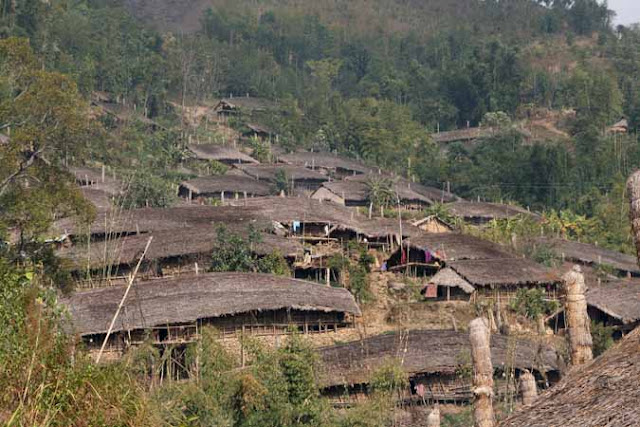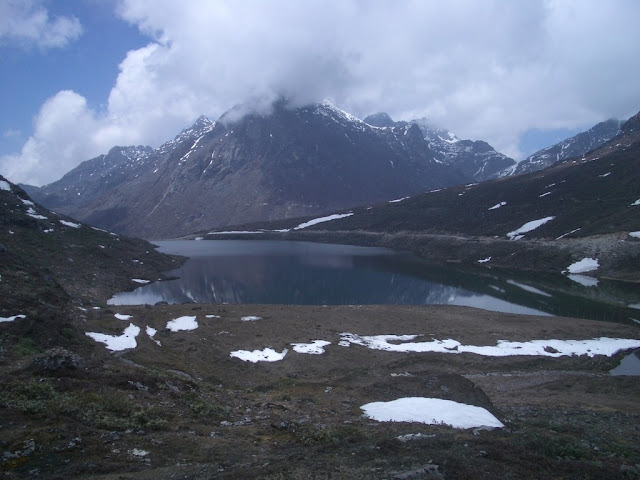The district was formed when Subansiri district was bifurcated into Upper and Lower Subansiri districts in 1987.
Geography:
The district headquarters are located at Daporijo. Upper Subansiri district occupies an area of 7,032 square kilometres (2,715 sq mi) at latitude between 27.45"N and 28.13"N and longitude 93.13"E and 94.36"E. The important towns are Daporijo, Dumporijo, Taliha, Nacho, Siyum, and Maro.
The Upper Subansiri district derives its name from the Subansiri River which meanders through the entire length of the district.
Upper Subansiri is the administrative district of Arunachal Pradesh under the jurisdiction of the Deputy Commissioner. The Additional Deputy Commissioner, , Extra Assistant Commissioner , Superintendent of Police and various Circle Officers assist the Deputy Commissioner to perform administrative duties. The headquarters of Upper Subansiri District, Daporijio is only 423 kms away from the capital city of Itanagar.
Divisions:
There are five Arunachal Pradesh Legislative Assembly constituencies in this district: Nacho, Taliha, Daporijo, Raga, and Dumporijo. All of these are part of Arunachal West Lok Sabha constituency.
The People:
Members of the Tagin, Nyishi, Nga and Galo are found in this district.
Languages spoken include Tagin, Nyishi and Galo, also in the Sino-Tibetan language family and spoken in the western part of the district.

Religious beliefs and practices of the people of the region are dominated by a number of spirits both benevolent and malevolent. The concepts of supreme god is also prevalent among their customs. Donyi Polo or the Sun-Moon is often regarded as supreme god. According to their beliefs,every act of human being is supposed to be governed by these spirits. The people of this region celebrate a number of festivals .There are chiefly four festivals celebrated by the local people of upper subansiri district and these are Si-Donyi ,Boori Boot -Yullo and Mopin festival.
According to the 2011 census Upper Subansiri district has a population of 83,205. This gives it a ranking of 621st in India (out of a total of 640). The district has a population density of 12 inhabitants per square kilometre (31 /sq mi) . Its population growth rate over the decade 2001-2011 was 50.34 %. Upper Subansiri has a sex ratio of 982 females for every 1000 males, and a literacy rate of 63.96 %.
Economy:
In 2006 the Indian government named Upper Subansiri one of the country's 250 most backward districts (out of a total of 640). It is the only district in Arunachal Pradesh currently receiving funds from the Backward Regions Grant Fund Programme (BRGF).
Climate:
The Upper Subansiri District of Arunachal Pradesh witnesses a remarkable low temperature all through the season. Thus this district is framed in lush green forests and with a rich variety of flora. The beautiful Subansiri River Flows through the Upper Subansiri District.
Education:.
Vivekananda Kendra Vidyalaya Kuporijo, Primary, Middle and Higher Secondary Govt school, Si-Donyi Residential School. Several prominent NGOs also provide quality education in the district.
Water Supply in the Region(by PHED):
For more information you can log in to : http://www.arunachalphed.nic.in
Explore the Beauty:
Lofty snow-capped mountains adorn this high altitude, the highest mountain peak being the Highest Peak Tapak Siri which is 5,375 meters above sea level. The Subansiri River Flows through the district.. It is famed for its lush flora and rich variety of rare wild species.
The Upper Subansiri District is a perfect tourist destination of the north east for its beautiful locations. People in large numbers come to explore the natural beauties of this district. The beautiful cold weather along with green forestry and rare species of flowers constitute some rare beauty of nature. Sightseeing in this district includes the Megna Mandir and Tapak Siri Peak. Devotees across India come in large numbers to offer their prayers in the Megna Mandir.
Many rare wild inhabitants have been found in the forests of the Upper Subansiri District.
Note: information about every section are based on google search.
Economy:
In 2006 the Indian government named Upper Subansiri one of the country's 250 most backward districts (out of a total of 640). It is the only district in Arunachal Pradesh currently receiving funds from the Backward Regions Grant Fund Programme (BRGF).
Climate:
The Upper Subansiri District of Arunachal Pradesh witnesses a remarkable low temperature all through the season. Thus this district is framed in lush green forests and with a rich variety of flora. The beautiful Subansiri River Flows through the Upper Subansiri District.
Education:.
Vivekananda Kendra Vidyalaya Kuporijo, Primary, Middle and Higher Secondary Govt school, Si-Donyi Residential School. Several prominent NGOs also provide quality education in the district.
Water Supply in the Region(by PHED):
For more information you can log in to : http://www.arunachalphed.nic.in
Explore the Beauty:
Lofty snow-capped mountains adorn this high altitude, the highest mountain peak being the Highest Peak Tapak Siri which is 5,375 meters above sea level. The Subansiri River Flows through the district.. It is famed for its lush flora and rich variety of rare wild species.
The Upper Subansiri District is a perfect tourist destination of the north east for its beautiful locations. People in large numbers come to explore the natural beauties of this district. The beautiful cold weather along with green forestry and rare species of flowers constitute some rare beauty of nature. Sightseeing in this district includes the Megna Mandir and Tapak Siri Peak. Devotees across India come in large numbers to offer their prayers in the Megna Mandir.
Many rare wild inhabitants have been found in the forests of the Upper Subansiri District.
Note: information about every section are based on google search.












.jpg)





















.jpg)


.jpg)
.jpg)










.jpg)
.jpg)
.jpg)
.jpg)
.jpg)



